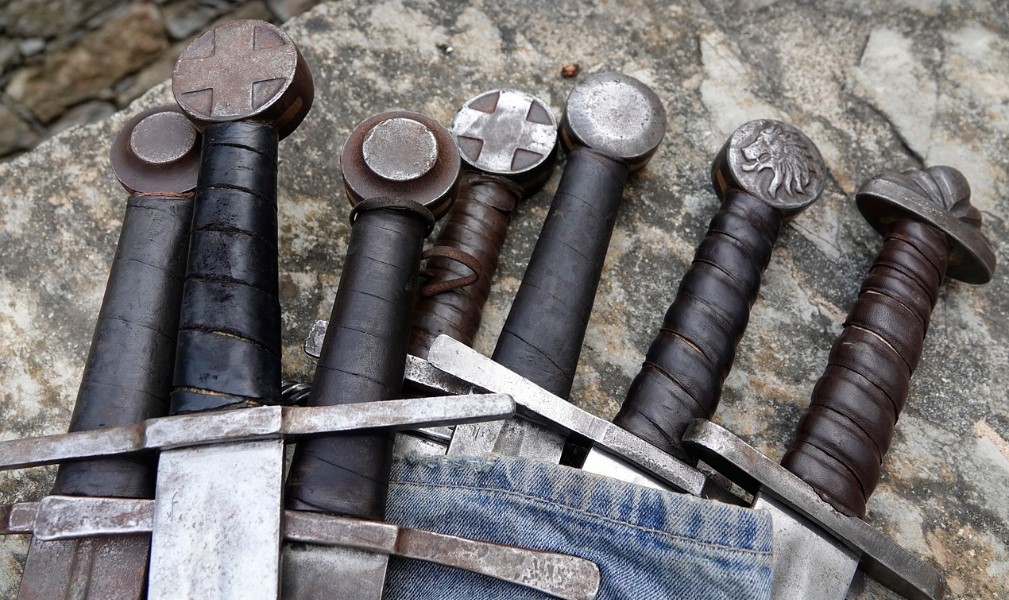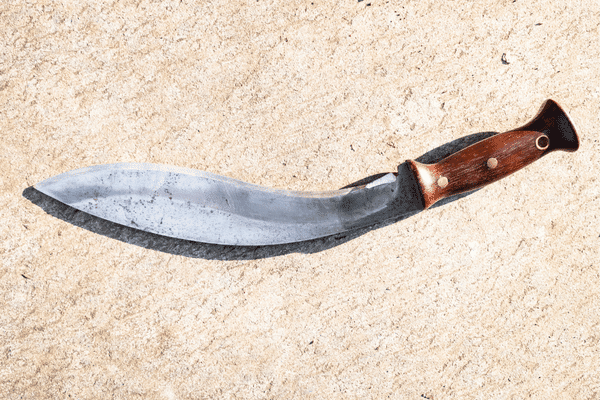Unveiling the Enigmatic World of Swords: A Comprehensive Guide to Different Types.
In the vast realm of weaponry, few weapons have captured the imagination and fascination of enthusiasts like the sword. Swords have played a pivotal role throughout history, serving as symbols of power, status, and martial prowess. This article aims to explore the diverse and intriguing world of swords, delving into their historical significance, design variations, and the unique characteristics that distinguish each type.
I. Historical Evolution of Swords:
To truly appreciate the diversity of swords, it is essential to understand their historical evolution. Swords have been an integral part of human history for thousands of years, evolving alongside advancements in metallurgy, craftsmanship, and combat tactics.
A. Ancient Swords:
Bronze Age Swords: Swords made during the Bronze Age sword were crafted from bronze, an alloy of copper and tin. These early swords were characterized by their short blades and were primarily stabbing weapons.
Iron Age Swords: With the advent of iron, swords became longer and more versatile. The transition from bronze to iron marked a significant leap in the durability and effectiveness of swords in battle.
B. Medieval Swords:
Viking Swords: Viking swords, with their distinctive hilt and broad, double-edged blades, were wielded by Norse warriors. Renowned for their strength and craftsmanship, these swords reflected the martial spirit of the Vikings.
Knightly Swords: The Middle Ages saw the rise of knightly swords, characterized by their long, tapering blades and cruciform hilts. These knightly swords were often used by knights in armored combat and jousting tournaments.
C. Renaissance and Beyond:
- Rapier and Smallsword: The Renaissance introduced a shift towards lighter, more agile swords. The rapier, with its slender blade and complex hilt, became popular for dueling and self-defense. The subsequent development of the smallsword further emphasized speed and precision.
II. Classification Based on Design and Purpose:
A. Cutting Swords:
Katana: Originating in Japan, the Katana sword is a quintessential cutting sword with a curved, single-edged blade. Known for its sharpness and precision, the katana holds a revered place in Japanese culture and martial arts.
Scimitar: With its distinct curved blade, the scimitar has historical roots in the Middle East. Designed for slashing attacks, it became synonymous with warriors from the Islamic world.
B. Thrusting Swords:
Rapier: The Rapier sword, a slender and agile thrusting sword, gained popularity during the Renaissance. Favored by duelists and civilians, it emphasized quick, precise movements.
Estoc: The Estoc, with its narrow, triangular blade, was specifically designed for thrusting through the gaps in armor. It found use during the late medieval and Renaissance periods.
C. Double-Edged Swords:
Broadsword: The broadsword, with its wide, straight blade, was a versatile weapon used by European infantry. It could deliver powerful cutting blows and thrusts in combat.
Claymore: The Scottish Claymore sword, characterized by its distinctive basket hilt, was a two-handed sword known for its effectiveness in battles against armored opponents.
III. Regional Variations:
A. Japanese Swords:
Tanto: The tanto is a Japanese dagger or knife with a short blade, traditionally used for close-quarters combat and as a utility tool.
Wakizashi: Serving as a companion sword to the katana, the wakizashi is a shorter sword with a similar design. It was often used by samurai in indoor settings.
B. European Swords:
Flamberge: The flamberge, or wavy-bladed sword, featured a blade with distinctive waves or serpentine curves. This design was not only aesthetically unique but also served to increase the sword's cutting capacity.
Rapier vs. Smallsword: Contrasting the rapier and smallsword, European swords from the Renaissance and later periods reflected the evolving techniques of swordsmanship and changing social norms.
IV. Collectibility and Modern Interpretations:
A. Collectors' Swords:
The fascination with swords extends beyond practical use, with many enthusiasts collecting historical and replica swords for their artistic and historical value.B. Modern Martial Arts:
Contemporary martial arts schools continue to incorporate traditional swordsmanship techniques into their training programs. The katana, for example, remains a central element in Japanese martial arts like Kendo.V. Conclusion:
In conclusion, the types of swords are a captivating tapestry woven with threads of history, culture, and craftsmanship. From the ancient battlefields of the Bronze Age to the refined duels of the Renaissance, swords have stood as both tools of war and symbols of honor. Understanding the diverse types of swords allows us to appreciate the ingenuity and artistry that has shaped these iconic weapons throughout the ages. Whether as historical artifacts or functional tools, swords continue to fascinate and inspire, bridging the gap between the past and the present.


.png)




Comments
Post a Comment